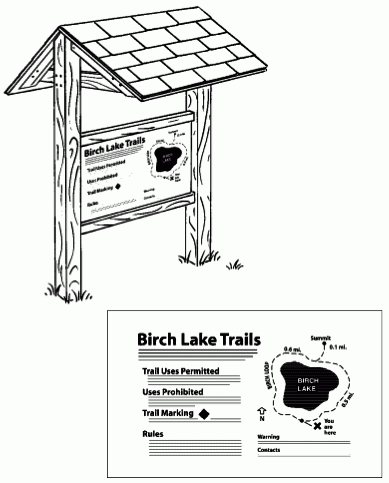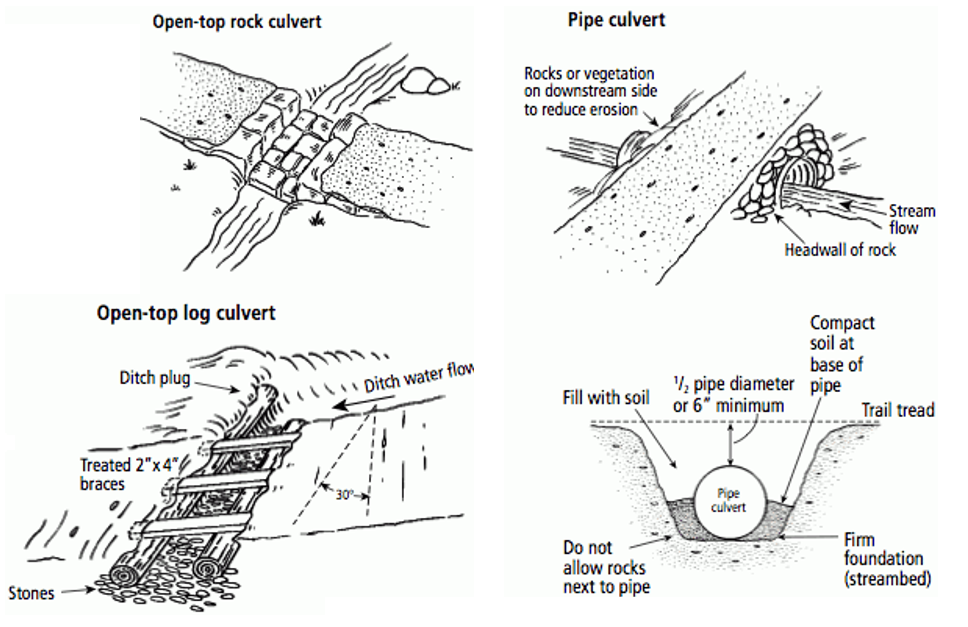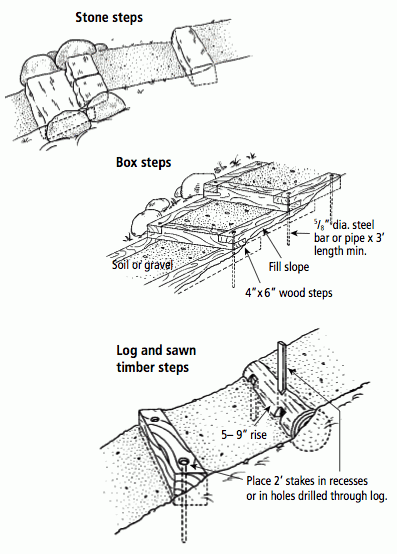One of the aims of Mission 66 was to upgrade park facilities before the NPS turned 50 in 1966. These standards only apply to pedestrian trails directly connected to a trailhead or an accessible trail that substantially meets the technical requirements for an accessible trail.

Pennsylvania Trail Design And Development Principles Pashek Mtr
TRAIL PLANNING DESIGN AND DEVELOPMENT GUIDELINES MINNESOTA DEPARTMENT Index1 OF NATURAL RESOURCES Index A accessibility guidelines and resources 1617 673674 aggregate for natural surface trails 641642 644 653 trail pavement design 537 aggregate load bearing structures 643.

. These guidelines have been developed around the trail planning and design process outlined in Figure 1. Corduroy Not recommended any more When biodiversity and trails face each other. TRAIL DESIGN STANDARDS 5-9 SIDEWALKS Sidewalks and walkways enhance the walkability of an area.
Review of Existing Guidelines and Practices Program Manager. A trails design should resist erosion and require little maintenance. Wire flags stiff wire 2 feet or longer with plastic flag.
WTAs hiking guide is the most comprehensive database of hikes in Washington and comprises content written by local hiking experts and user submitted information. Relief for trails came through the Mission 66 program started in 1956. Trails in the NPS suffered in the 1940s and early 1950s.
Hiking trails and paths can be designed in many ways and needs to be adapted to the place the culture and the amount of use on it. The plan sheets are typical trail drawings with tables you will edit to meet the design standards for your project Several sheets define the location and scope of your project. When a hiking trail cross a stream the passage can be designed in several ways.
3 What Are Plan Sheets And How To Use Them Continued Sheets that define the. The agencies that are parties to the Trail discussed and agreed on minimum design guidelines for the trail summarized in the table. Many trails needed some maintenance and other.
A trail management plan should provide specific and detailed design recommendations as well as information about installation of trail signs. This trail system expanded as the area became a state park in 1864 and then later a national park in 1890. This simple Guide shows how.
Design multi-use paved trails for an appropriate speed for cyclists. This chapter presents the design guidelines for a range of trail types as well as trail crossings trailhead access points and a variety of trail amenities. As you mark the trail keep your design standards in mind.
Trails should give hikers a natural-seeming experience while minimizing disturbance to the environment they traverse. Trail alignment should include both vertical and horizontal alignment and is related to design speed and sight stopping distance. Design placemaking Simple timber structure over wet area.
We respectfully acknowledge the lands we are visiting are the homelands. During this time national efforts focused on World War II. Bar is buried completely at least 36 down trail from the bottom of the drain dip.
DRAFT 1142010 Log should be green 10-12 in diameter and peeled. Railroads began to spring up across the country. All data is vetted by WTA staff.
Set bar at 45 degrees less or more to match the force of the water. The plan should ensure that signs do not overwhelm the trail in complexity or number especially along backcountry trails. This new 300-page spiral-bound publication several years in the making provides a first-ever comprehensive how-to guidebook for developing all types of recreational trails.
KHTA Trail Building Guidelines Suzanne Mittenthal revised 71116 I. Wooden stakes 12 to 18 inches or longer topped with brightly colored flagging or paint. FS personnel only will fall trees for bars.
The Guidelines will assist Park staff and Park. Use well tamped soil or crushed small rocks to reinforce the log. Sidewalk design should incorporate an appropriate walkway width safety lighting pleasant walking surface texture benches and a landscaped separation of pedestrian and vehicular traffic to create a pleasurable walking experience.
The Minnesota Department of Natural Resources DNR is pleased to announce the completion of its much anticipated Trail Planning Design Development Guidelines. Trails should be at least 8 to 10 feet wide to accommodate one-way traffic. They should include trail configuration and length tread surface and width clearing width and height grade turning radius and more.
The Trail Guidelines in this document will serve to update the existing standards and incorporate new methods and procedures for the Park s current and future trails related to planning design construction and management. The remaining sheets provide details on specific trail construction features. Establish design standards These standards will guide the construction of your trail s so its worth spending some time on them before you starting flagging its location.
And in the West similar hotel trails were designed to guide stock and pack trains into remote country. Mark the centerline of the trail using one of these materials. Trail Planning A step by step process that can be applied to differing scale trail planning initiatives.
This can always be exceeded in terms of width improved surface and gentler gradient as it typically is in the developed parks along the route. Planning design and implementation standards are derived. All having a huge influence on both the hiking experience and on the place The corduroy timber path concept Types.
A minimum design speed of. The top of the bar should be level with. Trails designated for use by mountain bikers equestrians off-highway vehicles or a combination thereof are exempt from these standards.
In Californias Yosemite Valley a network of tourist trails began in the 1850s. The trail planning and design checklist on the next page also provides a useful reference to ensure all steps are undertaken. Rolls of plastic flagging tie 15-inch strips to branches.
Designing Sidewalks and Trails for Access Part I of II. This resource is made possible by the donations of WTA members. These guidelines are intended to allow flexibility in trail design appropriate to the location site-specific environmental conditions and expected users.

Pennsylvania Trail Design And Development Principles Pashek Mtr

14 Recreational Trail Design Woodland Stewardship A Practical Guide For Midwestern Landowners 3rd Edition

Create A Trail North Carolina Trails

14 Recreational Trail Design Woodland Stewardship A Practical Guide For Midwestern Landowners 3rd Edition

Create A Trail North Carolina Trails

14 Recreational Trail Design Woodland Stewardship A Practical Guide For Midwestern Landowners 3rd Edition

Pennsylvania Trail Design And Development Principles Pashek Mtr

0 comments
Post a Comment